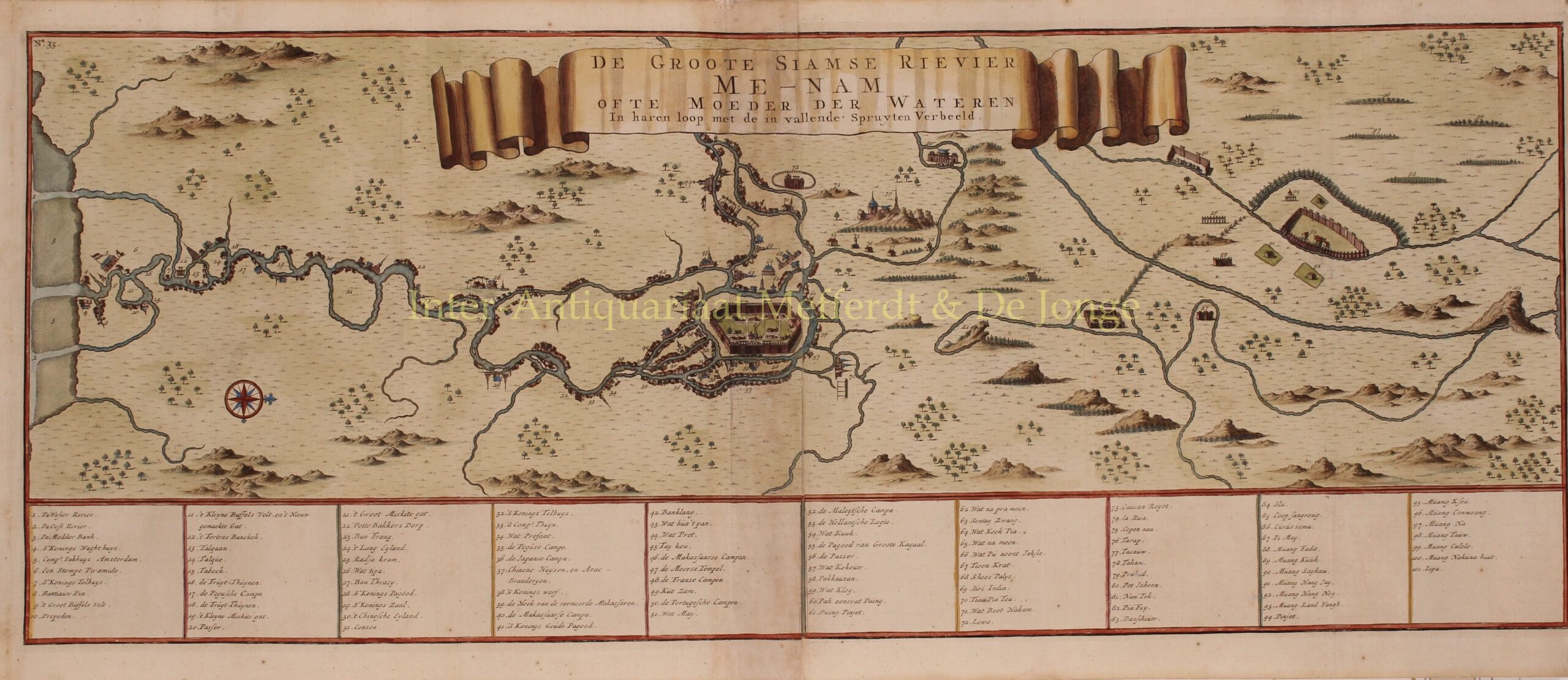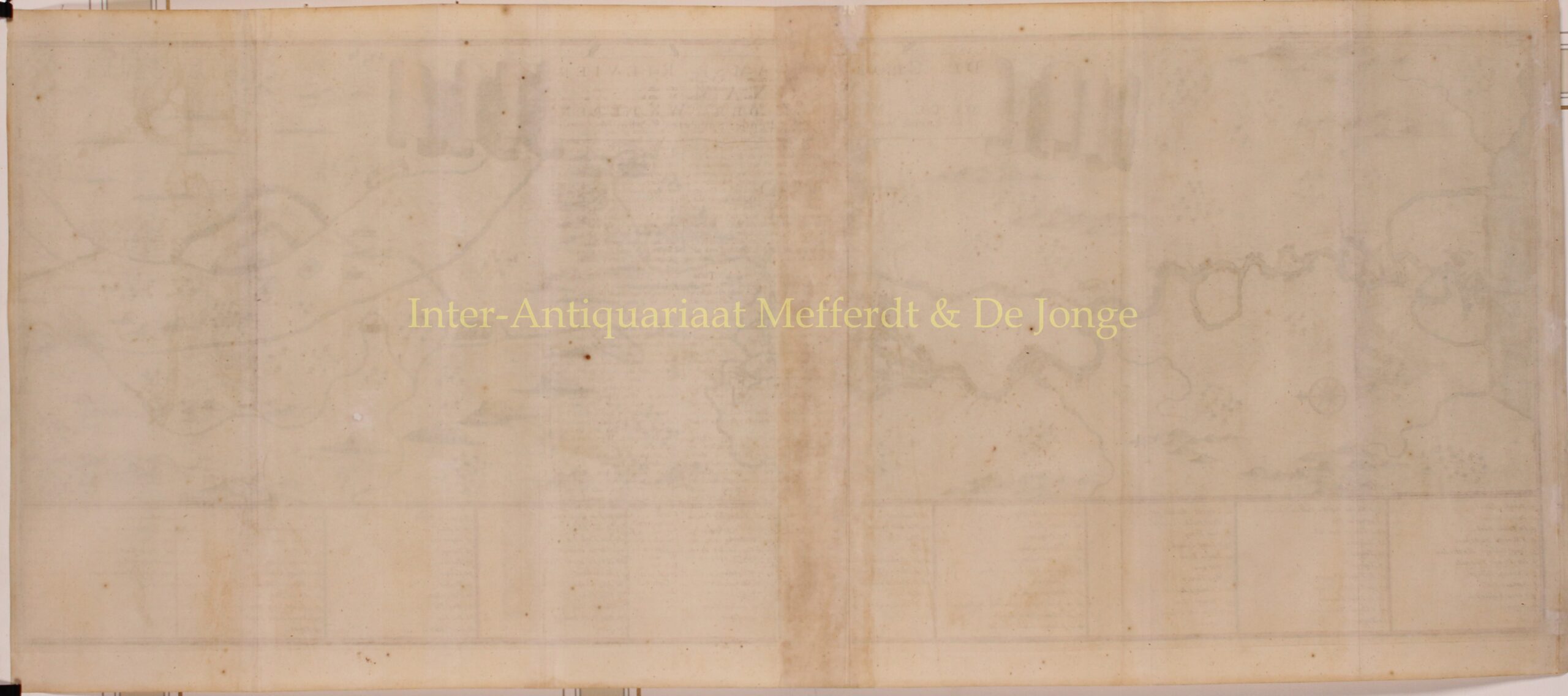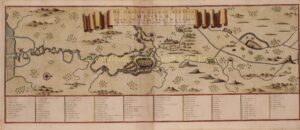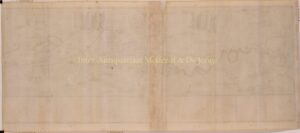SIAMESE KINGDOM WITH CHAO PHRAYA RIVER VALLEY
“De Groote Siamse Rievier Me-nam of te Moeder der Wateren”, Copper engraving on two joined sheets from François Valentijn’s “Oud en Nieuw Oost-Indien”, made by Jan van Braam and published in Dordrecht by Gerard onder de Linden in 1724-1726. Coloured by a later hand. Size: 30 x 75cm.
We see the Chao Phraya River region of the Siamese Kingdom (modern day Thailand) with its capital Ayutthaya and neighbouring upcountry regions. The grandest of early maps of the river and adjacent territories, its stylised, pictographic quality, and its seemingly lack of uniform scale, all suggest that it may have been inspired by an indigenious map. The map’s title, “De Groote Siamse Rievier Me-nam”, continues the old confusion about the term Menam, which is not the name of the river as such, but simply the Thai word for river (literally, ‘mother of waters’). Although the error had been brought to light already in 1688, Menam continued to be used even into the nineteenth century by British envoys in Siam.
Bangkok is marked in the accompanying key as no. 12 (“’t Fortres Banckok”), where the western (upper) and central branches of the river emptying into the Gulf of Siam meet. Given its position on the main waterway of the country it was considered the most important place in the kingdom of Siam, for it is the only place anywhere on the sea coast that could offer some resistance to enemy attack. “The houses were built according to the fashion of the country on piles of bamboo. To every house, floating or not, there is attached a boat generally very small, for the use of the family, while the few streets that Bangkok boasts are passable on foot only in dry weather.” Nearby the Dutch East India Company (VOC) had built “Compagnie Pakhuys Amsterdam” [Warehouse Amsterdam] which was two leagues from the sea“.
François Valentijn was a prominent historian of the Dutch East India Company (V.O.C.) who is best known for “Oud en Nieuw Oost Indiën”, his vast illustrated account of the Dutch trading empire in Asia. He travelled to the East Indies twice and served as Calvinist minister to Ambon between 1686 and 1694. In preparing this monumental work, he was given privileged access to the previously secret archives of the V.O.C., containing transcripts and copies of important earlier Dutch voyages.
While Valentijn’s maps and diagrams were prized possessions, his scholarship, judging by 21st century standards was unscrupulous. Valentijn’s use of the products of other scientists’ and writers’ intellectual labour and his passing it off as his own, reveals a penchant for self-aggrandisement.
Price: SOLD





